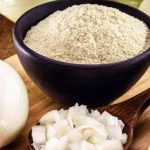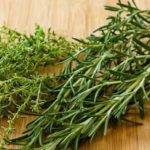Ricotta Versus Mascarpone

The duo of Mascarpone and Ricotta cheese are some of the most popular Italian cheese that are now widely eaten and accepted by all cheese lovers all over the world. Their dominance in the cheese world is no surprise especially due to their taste, texture and overall flavor. But it doesn’t end there as there is already confusion and debate on ricotta vs mascarpone, trying to find out which cheese is the best. In this article, I will break down Ricotta cheese and Mascarpone cheese for you to be able to spot the differences and make your choice of cheese when next you are shopping for cheese.
What is Ricotta Cheese?
Ricotta is a versatile and creamy cheese that has a long history in Italian cuisine. Derived from the Latin word “recocta,” meaning “recooked,” ricotta is made by heating the whey left over from cheese production. This process allows the proteins in the whey to coagulate, resulting in a soft and slightly grainy cheese with a delicate flavor.
In sweet preparations, ricotta shines in classic Italian desserts like cannoli and ricotta cheesecake. Its creamy consistency and subtle sweetness make it the perfect filling for cannoli shells, which are traditionally crisp pastry tubes. The cheese is often combined with sugar, vanilla, and sometimes chocolate or citrus zest to create a rich and indulgent filling. Similarly, in ricotta cheesecake, the cheese is blended with sugar, eggs, and sometimes a hint of lemon or orange zest, resulting in a light and fluffy dessert with a delightful tang.
Ricotta’s versatility extends to savory dishes as well. It can be used as a filling for stuffed pasta like ravioli or tortellini, adding a creamy and flavorful element to the dish. When combined with herbs, such as basil or parsley, and grated Parmesan cheese, ricotta creates a delightful stuffing for vegetables like zucchini or bell peppers.
Ricotta also pairs well with fresh vegetables and can be incorporated into salads or used as a spread on toasted bread. When combined with roasted red peppers, garlic, and olive oil, ricotta transforms into a delicious dip or spread that can be enjoyed as an appetizer or snack.
One of the key advantages of using ricotta in cooking is its lightness and ability to enhance other flavors without overpowering them. It can be used as a substitute for heavier cheeses like mozzarella or bechamel sauce in lasagna, resulting in a lighter and more delicate dish. Ricotta can also be blended with herbs and spices to create flavorful spreads for sandwiches or a creamy base for dips and dressings.
When working with ricotta, it’s important to handle it with care, as it has a delicate texture that can become grainy if overcooked or mishandled. It is best stored in the refrigerator and consumed within a few days to maintain its freshness.
What is Mascarpone Cheese?
Mascarpone is a luxurious and creamy Italian cheese that has become synonymous with indulgence and decadence in the culinary world. With its rich and velvety texture, mascarpone adds a touch of elegance to both sweet and savory dishes. This beloved ingredient is highly versatile, lending itself to a wide range of culinary creations.
One of the most famous applications of mascarpone is in the classic Italian dessert, tiramisu. In this iconic dish, mascarpone is blended with sugar and beaten eggs to create a light and airy cream. Layered with espresso-soaked ladyfingers and dusted with cocoa powder, tiramisu showcases mascarpone’s ability to bring a velvety richness and delicate sweetness to the dessert.
Beyond tiramisu, mascarpone can be used in various sweet treats. It can be incorporated into frostings and fillings for cakes, cupcakes, and pastries, adding a luxurious and smooth texture. The cheese’s mild and creamy flavor makes it an ideal companion for fresh fruits, such as berries, peaches, or figs. A dollop of mascarpone on top of a slice of warm apple pie or a fruit tart can elevate the dessert to new heights.
Mascarpone is not limited to the realm of desserts; it also shines in savory dishes. Its versatility allows it to be used in sauces and spreads, adding a touch of richness and creaminess to pasta dishes or risottos. It can be folded into whipped potatoes, providing an extra layer of silkiness. Mascarpone can even be incorporated into savory appetizers, such as stuffed mushrooms or bruschetta, where its creamy nature complements a variety of flavors.
When working with mascarpone, know that it should be refrigerated and used within its shelf life for optimal freshness. Mascarpone can also be quite sensitive to heat, so it is best to incorporate it into dishes off the heat or at low temperatures to prevent curdling.
Mascarpone vs Ricotta Cheese
We now know what the luxury mascarpone cheese as well as what the ricotta cheese is, but how then do we know their exact differences and similarities if any? That is what this section would highlight. With their respective features shared here you should be able to make your choice of cheese with ease.
Mascarpone and ricotta are both Italian cheeses with their own distinct characteristics and culinary applications. While they may share some similarities, there are notable differences between the two.
- Texture: Mascarpone is known for its rich, creamy, and velvety texture. It has a smooth consistency, similar to a thick cream or butter. On the other hand, ricotta has a grainy and slightly granular texture. It is a soft cheese that crumbles easily.
- Flavor: Mascarpone has a mild and delicate flavor with a slight tang. It is subtly sweet and creamy, making it a versatile ingredient in both sweet and savory dishes. Ricotta, on the other hand, has a slightly sweet and milky flavor. It is less creamy than mascarpone and has a slightly grainy taste due to its production process.
- Fat Content: Mascarpone has a high fat content, typically ranging from 60% to 75%. This contributes to its luxurious and rich mouthfeel. Ricotta, on the other hand, is a lower fat cheese, usually ranging from 10% to 20%. This makes ricotta a lighter option compared to mascarpone.
- Culinary Uses: Mascarpone is often used in desserts to add richness and creaminess. It is a key ingredient in the classic Italian dessert, tiramisu, and is also used in frostings, fillings, and sauces. Mascarpone can also be incorporated into savory dishes such as pasta sauces or risottos. On the other hand, ricotta is used in a variety of dishes. It is commonly used as a filling for pasta, such as ravioli or lasagna. Ricotta is also a popular ingredient in Italian desserts like cannoli and ricotta cheesecake. Additionally, it can be used as a spread, mixed with herbs or as a topping for toast or vegetables.
- Cooking and Heat Stability: Mascarpone is delicate and can separate or curdle if exposed to high heat or prolonged cooking. It is typically added to dishes off the heat or used as a finishing touch. Ricotta, on the other hand, is more heat-stable and can be incorporated into dishes that require cooking, such as baked pasta dishes or stuffed vegetables.
Below is a tabular representation of the key differences between mascarpone and ricotta cheese that makes the ricotta versus mascarpone an easy one for any new cook that’s trying to figure out what cheese to opt for and how to handle them in the kitchen.
Marscapone vs Ricotta Comparison Table
| Features | Mascarpone | Ricotta |
|---|---|---|
| Texture | Creamy, smooth, velvety | Grainy, slightly granular |
| Flavor | Mild, delicate, slightly tangy | Slightly sweet, milky |
| Fat Content | High (60% to 75%) | Lower (10% to 20%) |
| Culinary Uses | Desserts, frostings, sauces | Pasta fillings, desserts, spreads, toppings |
| Cooking Stability | Delicate, may curdle at high heat | More heat-stable, can be used in cooked dishes |
| Origin | Italy | Italy |
At this point the ricotta vs mascarpone confusion or debate should be settled for anyone. In a nutshell, mascarpone and ricotta are both delicious Italian cheeses, but they differ in terms of texture, flavor, fat content, and culinary uses. Mascarpone offers a rich and velvety texture, while ricotta has a grainy consistency. Mascarpone is creamier and has a higher fat content, while ricotta is lighter. Each cheese has its own unique applications in both sweet and savory dishes, with mascarpone lending itself well to desserts and creamy sauces, while ricotta is commonly used as a filling or topping in pasta dishes and desserts.



